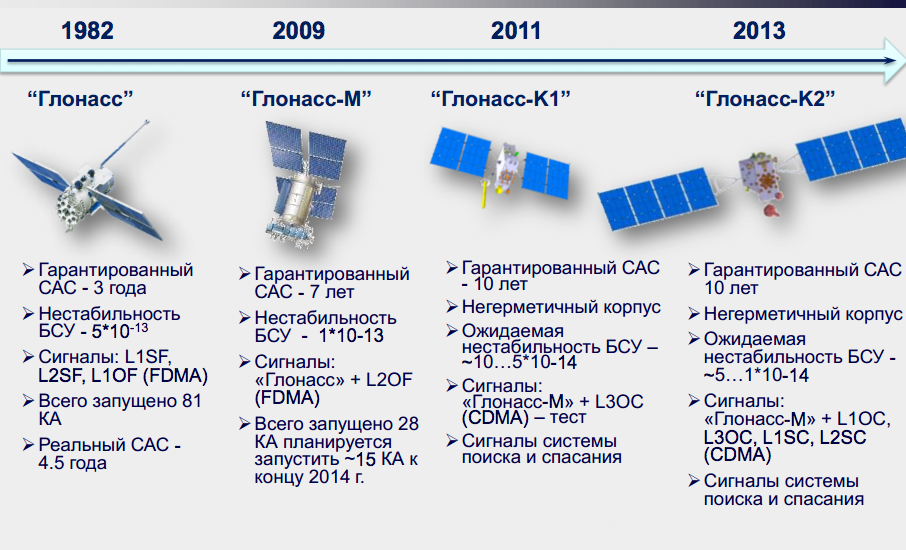Today marks the 38th anniversary of the launch of the first Glonass spacecraft into orbit

October 12 is the 38th anniversary of the launch of the first satellite "Kosmos-1413", which became the beginning of the deployment of the constellation of satellites of the Russian GLONASS navigation system.
Flight tests of the high-orbit Russian navigation system, called GLONASS, were started on October 12, 1982 with the launch of the first spacecraft of the Glonass series ("Kosmos-1413").
On September 24, 1993 the system was officially put into operation with a limited orbital constellation of 12 satellites, replacing the first domestic low-orbit system "Cicada".
In December 1995, the orbital constellation was deployed up to the regular composition (of 24 satellites), which is necessary to fully cover the entire globe.
The idea and methods of satellite navigation are based on the use of artificial satellites of the Earth with coordinates and speed known at any time as reference points in space. The first reasonable proposal for the use of satellites for navigation was born in Leningrad before the launch of the first Earth satellite. It happened in 1957 in the team headed by Professor Valentin Shebshaevich in the Leningrad Air Force Academy of Engineering named after M. Gorky, when researching the possibilities of application of radio astronomical methods for aircraft navigation. In 1963 further research allowed us to move to development work on the first domestic low-orbit system "Cicada".
GLONASS system is designed to form a continuous field of navigation signals, which allows for high-precision determination of coordinates and speed of objects equipped with special receivers. Its steady operation is the key to successful solution of many defense, economic, social and scientific-production tasks.
The GLONASS system is based on 24 spacecraft in the middle circular orbit of 19 100 km height. They are located in three orbital planes, eight satellites in each.

